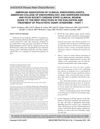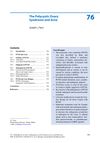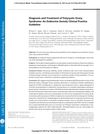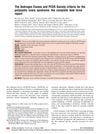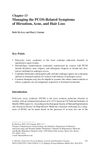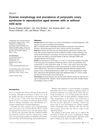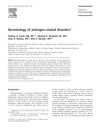Polycystic Ovary Syndrome: Overview and Management
January 2019
in “
The Nurse Practitioner
”
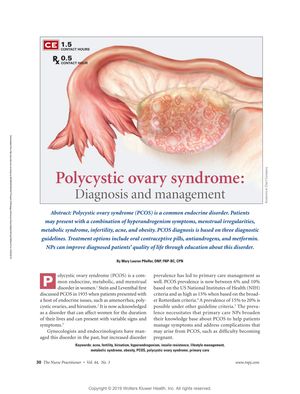
TLDR PCOS is a common hormonal disorder in women, treated with lifestyle changes, medication, and patient education.
The document from 2019 provides an overview of Polycystic Ovary Syndrome (PCOS), affecting 6% to 10% of women according to the US National Institutes of Health criteria, with prevalence potentially up to 15% to 20% under other criteria. It is characterized by symptoms such as hyperandrogenism, menstrual irregularities, and metabolic syndrome, with obesity present in up to 76% of patients and insulin resistance in 65% to 70%. Diagnosis involves history, physical exam, lab tests, and sometimes pelvic transvaginal ultrasound. Treatment includes lifestyle changes, oral contraceptive pills, antiandrogens like spironolactone and finasteride for hirsutism and hair loss, and metformin for insulin resistance. Education is crucial for improving patient quality of life. Weight loss is important but challenging due to insulin resistance. For adolescents, metformin or OCPs are first-line treatments, and for those seeking to conceive, clomiphene is recommended, with metformin as an adjunct if necessary. Management of PCOS in perimenopausal and menopausal women includes addressing insulin resistance and hirsutism. Nurse practitioners play a key role in managing PCOS through medication, lifestyle modification, and patient education to enhance long-term health outcomes.
